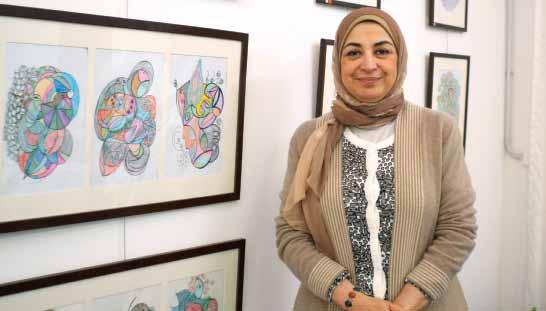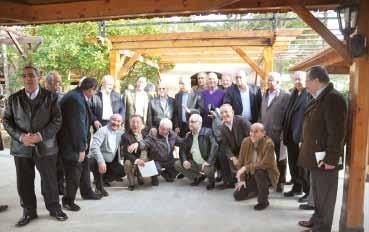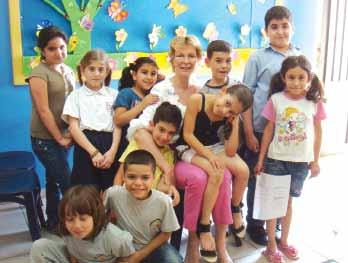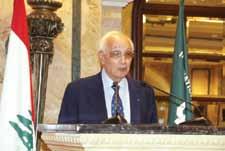
7 minute read
The adventures of Alexander MacLachlan: Smyrna (Part II
The Adventures of Alexander MacLachlan:
Life in Smyrna
In 1820, Reverends Pliny Fisk and Levi Parson established a Protestant Mission base in the ancient town of Smyrna. Sixty-seven years later, Alexander MacLachlan sailed to Tarsus and co-founded a protestant school for boys – today known as The American Tarsus College. A disagreement with his co-founder, however, prompted him to accept an invitation for a holiday in Smyrna. He had heard that there was a need for a boys’ school there. If he didn’t like the town or if he found there was no need for his services, he decided to simply head back to the US.
If Alexander MacLachlan expected a backward city, he didn’t find one. Smyrna was a thriving city in the Ottoman Empire. It was – if the phrase can be coined – the ‘Paris of Asia Minor’. It was well-known for its majority Christian population, which comprised of Greeks, Armenians, Levantines, Europeans, and Americans. The city was divided into quarters: the Greek quarter across the city; the European quarter just behind the quayside; the wealthy Armenian quarter nearby, and the Jewish quarter. It was a friendly arrangement. All were enjoying a bourgeoisie lifestyle, enjoying dining in opulent hotels, reveling in Smyrna harbor

imported foods, and frequenting lavish clubs. The many banks and at least seven postal systems (each country set up its own next to the Ottoman system) were further testimony of the city’s prosperity. Just beyond, were the overcrowded and dilapidated quarter of the Turks, most of whom were artisans and craftsmen. The most recent arrivals were the Americans who set up their homes in a large colony just outside the city: ‘Paradise’. It was here that MacLachlan would eventually build his vision of a school: International College. But at this moment in 1890, MacLachlan was solely preoccupied with Rose Blackler, the daughter of an American businessman who moved to Smyrna in 1844 to open a trading store. She was a teacher at the American Collegiate Institute – a Protestant girls’ school in Smyrna. A year later, on 14 February 1891, they married. Rose would later prove to be instrumental in founding IC and supporting her husband through many upcoming trials and tribulations. While in Smyrna, MacLachlan realized that there was a strong need for a boys’ school. He knew he was the man for the job but the decision had to come from the American Mission Board in Boston. The MacLachlans returned to Tarsus to debate their next move. Should they return to the US or wait around in Tarsus for the Board to make this critical decision? Spring turned into summer and there was still no word from the Board. The couple was now expecting their first child and MacLachlan was getting increasingly worried. The last ship to Smyrna leaves in early October. This would be his last chance. Finally, in an impromptu move and without the formal consent of Boston (unbeknown to MacLachlan, the Board had indeed approved but slow communication delayed the arrival of the message), the couple boarded the last ship. It was already October and the school year was about to start. Barely two weeks after their arrival and armed with only a promise of $1000 (later cut to $500) from the Board to be delivered a few months into the school year, the MacLachlans managed to rent a small building which was previously used as a school. But “Mrs. Bartlett’s Boys’ School” and its meager leftover equipment were nowhere near MacLachlan’s vision for a school. Still, it would have to do for now. He pulled out the few discarded pine desks and put in an order – on credit - for a supply of textbooks,
Smyrna (Part II)
modern school desks, and a few small maps. Next, MacLachlan put up flyers around the town and along the two railway lines near the school announcing the opening of the “American Boys’ School”. Aware that Turkish law forbade Turkish children from entering foreign schools, MacLachlan was hoping to attract Armenians and Greeks and so stated very clearly on the flyers – against the Board’s instruction to include the word “Protestant” - he added: “This school is Christian but non-Sectarian”. This statement would remain on all the school’s catalogs and publications for many years to come. On 15 October 1891, the school opened its doors and five students were registered. All were Armenians, including a boy called Hadji Nourian. It would be years before MacLachlan discovered that the boy was actually a Turk and his parents cleverly added the Armenian patronymic ‘ian’ to his surname. MacLachlan also cleverly managed to find a way to evade the strong scrutiny of the “Karakol” – Turkish police station– directly opposite the school. The school could be accessed by a back alley which allowed MacLachlan to turn a blind eye to Turkish boys wishing to attend the school. Despite his arduous attempts, MacLachlan could solicit little, if any, help from the US Board. His little school, he realized, was effectively on its own. But the Canadian farmer was not one to succumb to failure. He believed too much in his mission. “To stunt our growth at this point would mean stagnation and failure,” he wrote in a 1937 self-published autobiography Potpourri of Sidelights and Shadows from Turkey, of which only a handful of copies are currently in existence. “We had no alternative but to allow the school to continue to develop on its merits, as it already had demonstrated its right to exist and capacity of self-reliance.” Meanwhile, the student body was growing steadily as the school gained a favorable reputation in town. Its success even surprised MacLachlan himself. But there The Turkish quarter of Smyrna with the castle of Mt. Pagus in the background

Dining room 1896
was talk that the owner was willing to sell the place to the first buyer that showed up at his doorstep. The MacLachlans would essentially lose their school if that were to happen. There was only one thing to do: buy it themselves. But the asking price of £3000 was well beyond the school’s meager financial capacity. In a goodwill gesture, the owner offered the school a deduction of £1000 if MacLachlan purchased it immediately. By pure coincidence, on that very evening, another Reverend and his wife were invited to the MacLachlan’s home for dinner. By way of conversation, the guests told them that the “London Jewish Mission” was getting ready to buy the school and convert it into a hospital. Shocked, MacLachlan realized he was about to lose his school. Suddenly, the guests excused themselves to another room. When they returned, they gave MacLachlan a startling proposition: they would be prepared to give him £2000 immediately to purchase the building. “Praise the Lord, the building is ours,” cried out MacLachlan when he received the approval of the proposal from the US Board. The minister rushed to the owner and made the offer. The Armenian owner, Takvor Spartali, honored his promise and deducted the remaining £1000. On impulse, MacLachlan delivered a speech about the need to make more space for his students. Other than general repairs, the long stable extension and the carriage building containing the servants’ quarters would have to be converted into large classrooms. So would Mr Spartali kindly donate £200? Spartali did not seem too happy. “Surely having presented you with £1000 to make possible your purchase of the property, you are not serious in asking me to make a further gift?” he said. “If you really mean it seriously, I will refuse to talk further with you.” But MacLachlan only laughed and assured him that yes that was exactly what he was doing. After all, MacLachlan argued, the school was serving the Greek community in Smyrna was it not? Spartali eyed him curiously for a little while. “I’ll give you another £100,” he finally said and wrote MacLachlan a check. MacLachlan walked away on top of the world. The school was finally theirs.
To be continued… ‘The Adventures of Alexander MacLachlan: Part III’ in the Winter Newsletter.
Historical information based on: an interview with Dr. Howard Reed (summer 2011); Potpourri of Sidelights and Shadows from Turkey, by Alexander MacLachlan, 1937.










